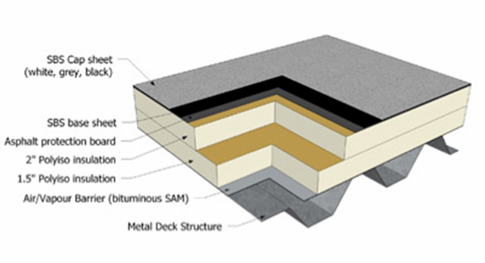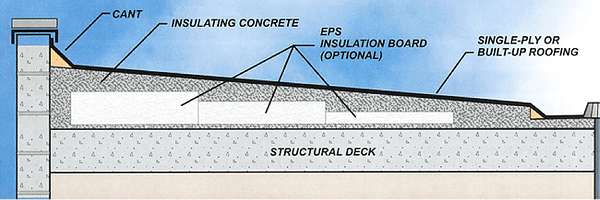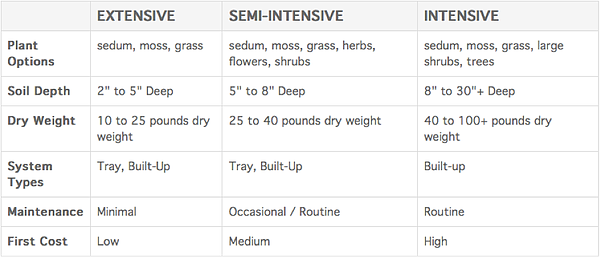900,000 Sq/Ft Data Center- Mississauga, ON
Roofing
Each roofing project has its sensitivities and complications. These types of projects are where Specified Roofing’s attention to detail and experience turn a challenging project into a seamless operation. We work closely with our clients and consultants to design a solution that performs best for each asset.
We have completed projects with each type of roofing system
- Modified Bitumen
- Built Up
- Single Ply (TPO, EPDM, PVC)
- Lightweight Concrete
- Green Roofing
- Photovoltaic
Modified Bitumen
Modified Bitumen roof system is a two-ply application waterproofing system. It contains a base sheet with no granule and a cap sheet with granule protection.
These reinforced rolled sheets can be adhered by; using hot asphalt, fused by torching the sheets together or cold applied using adhesives or peel & stick.
Built-Up Roofing
A Built-Up Roof is a system composed of a series of layers of organic felts or fiberglass felts and bitumen with a flood coat gravel surfacing embedded in hot asphalt.
The multiple layers give the system its strength and the gravel surfacing ensures the membrane does not deteriorate from exposure to the sun and other elements.
Lightweight Insulating Concrete
Lightweight Insulating Concrete Systems provide a high performance solution with increased moisture resistance, high insulating values, slope-to-drain qualities, and high compressive strength.
Typically, lightweight insulating concrete systems have a lower lifecycle cost as the roofing membrane can be re-applied to the concrete surface, lowering its impact on the environment.
Green Roofing
A green roof is planted over a waterproofing membrane and may also include additional layers such as root barriers, drainage and irrigation systems.
Green roofs can be classified as extensive, semi-intensive, or intensive, depending on the depth of the planting medium, maintenance and upkeep they require.
- Extensive - self-sustaining and require minimum maintenance
- Semi-Intensive - wider range of plant options and require routine maintenance
- Intensive - larger growing medium, plants & trees requiring a lot of maintenance
Our team at Specified Roofing will work to design the suitable green roofing system for every roof based on the specific requirements of the building owner.
Photovoltaic
Photovoltiac or solar electricity is a sustainable and reliable energy resource. When implementing a solar panel system on a rooftop, planning and engineering must be thorough to guarantee the benefits and energy efficiency is maximized for the lifecycle of the roof.
Before implementing a solar panel system on a rooftop you must ensure the building and roofing system can handle the increased weight load and allow accessibility to certain areas on the roof to maximize efficiency of the solar panel system. It is best to install the PV system on a new roofing system to avoid a costly removal and re-installation of the photovoltaic system during a roof replacement project.
Our team has recently installed a PV system on the roof of our head office.
Please reach out to our team if you have any questions on photovoltaic systems.
Roofing Terminology
Ponding Water: Standing water not draining off roof system. Can damage roof membrane and enter building envelope.
Flashing: A protective covering placed around roof penetrations/roof perimeter. Stops water penetrating roof.
Blueberries: These are the result of dried out surface asphalt.
Windswept: High winds can remove metal and stones from the roof pitch pocket is traditionally a metal boot or pipe sleeves that are used to create a water tight seal in a roof penetration that allows electrical cable and items to enter the building to provide power etc.
Decking: The substrate that the roof is sitting on. Can be metal, wood, or concrete.
Exposed felts: Areas lacking in surface asphalt, mineral, granule, or aggregate due to wind and water erosion.
Expansion/Control Joint: is an assembly designed to safely absorb the heat-induced expansion and contraction of construction materials.
Penetrations: Anything that you can see on top of the roof including perimeters, HVAC units, pitch pockets, vent stacks.
Core cut/Core sample: Cutting through the membrane of the roof down to the deck for investigative purposes.
Splits: Splits in a membrane can be caused by the expansion and contraction of the building. Old and weakening membranes are no longer flexible and eventually fail.
Ridges: You will see these on the surface of Built up roofs B.U.R as linear buckling upward through the layers of asphalt.
Alligatoring: A result of the drying out and shrinking of the asphalt surface.
Blisters: Appear to be giant bubbles at the surface of the roof.
Curbs: Raised frame used to mount mechanical units (air conditioning or exhaust fans), skylights, etc. on a roof.
Parapet Wall: Is a barrier which is an extension of the wall at the edge of a roof, terrace, balcony, or other structure.


